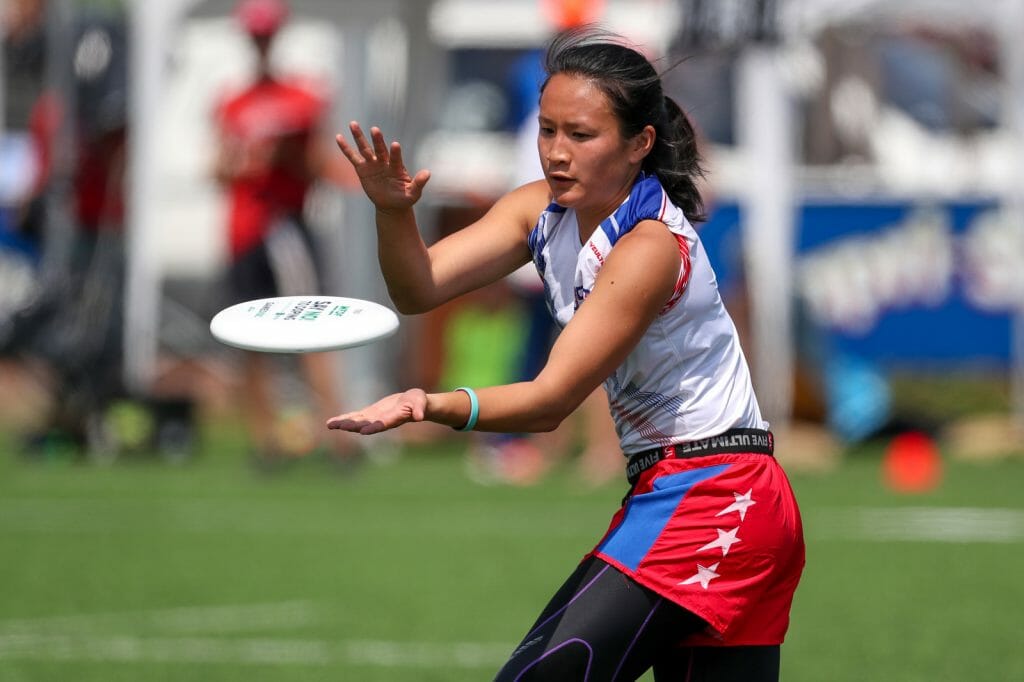Comparing players using the EDGE metric (and other stat systems)
May 27, 2021 by Paul in Analysis with 0 comments

After describing various aspects of the new EDGE statistic in the first four parts of the series, it’s time to give a full view of how EDGE assesses player performances on a team.
But let’s make this interactive. Table 1 shows the 5-game summary stats for the 10 players on the 2019 U24 Women’s team with the top EDGE scores, but without listing the EDGE scores. Before scrolling down to see them in Tables 2 and 3, how would you assess the players’ relative contributions, using whatever method you like? Consider not just the ordering of overall impact, but the range as well.
| Player | Throwing Yards | Receiving Yards | Goals | Assists | Hockey Assists | Turnovers | Blocks |
|---|---|---|---|---|---|---|---|
| Campana | 71 | 413 | 6 | 3 | 4 | 2 | 2 |
| Elimelech | 4 | 439 | 7 | 1 | 1 | 3 | 2 |
| Ismail | 461 | 305 | 2 | 12 | 3 | 3 | 4 |
| Iwamoto | 647 | 129 | 1 | 6 | 5 | 3 | 0 |
| Jezierski | 226 | 269 | 4 | 4 | 2 | 4.5 | 3 |
| Lee | 171 | 376 | 8 | 6 | 5 | 1 | 0 |
| McGhee | 410 | 57 | 6 | 1 | 6 | 3.5 | 1 |
| Trop | 126 | 825 | 10 | 6 | 3 | 2 | 4 |
| Werffeli | 738 | 158 | 3 | 4 | 8 | 2 | 1 |
| Zhu | 811 | 497 | 7 | 7 | 13 | 5.5 | 2 |
Table 1. Five-game summary stats for ten 2019 U24 Women’s team members, listed alphabetically. Note: Yardage is “net” downfield yardage, such that a 10-yard downfield throw and a 3-yard backward reset totals 7 throwing yards. Lateral yardage is not counted.
If you want a little more guidance, consider the output unit I’ve used for EDGE, which is goal equivalents. The entire team had 91 goal equivalents in EDGE methodology, so 3.6 goal equivalents would be the average (although not the median), given 25 players on the team. If it’s as relevant for you as it is for EDGE, you can also factor in the fact that over the five games, teams combined to average about 1 turnover per goal.
The point here is that EDGE outcomes are not counterintuitive, nor do they reveal something hidden from plain view; EDGE merely weights and combines components in a manner that attempts to reflect by how much teams win (or lose) games. So don’t expect surprises: the best outcome from my point of view is if EDGE scores align closely with most people’s intuition.
Hopefully, I’ve bought enough screen space with this chatter to prevent Table 2 from coming into view too early, as it shows the ordering of the offense-only (EDGE-O) scores, based on the 5-game summary model described in Part 4. I’ve included an additional column in order to pick up a discussion started in Part 3’s comment section.
Better Box Score Metrics: Team USA’s Winning EDGE [Pt. 5] is only available to Ultiworld Subscribers
Already have a subscription? Log in
Whether you visit Ultiworld for our reporting, our podcasts, or our video coverage, you can help us continue to provide high quality content with a subscription. By becoming a subscriber, not only do you receive benefits like exclusive articles and full article RSS feeds, you also help fund all of Ultiworld's coverage in general. We appreciate your support!